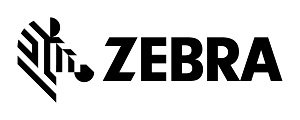RETAIL ENVIRONMENT
Seismic shifts in inventory counting
The shifting tectonic plates of retail have rarely seen such simultaneous and seismic movements going into peak trading as those uncertainties inflicted by the rupturing effects of global conflicts, climate change, rampant inflation, the cost-of-living crisis and the impact of prolific and persistent shop theft, often precipitated by increasing violence and aggression targeted at store colleagues.
This is the view of Mike Finch, Director of Retail Operations for Zebra Technologies who is a former head of loss prevention in both the UK and US and has broad experience of the impact of all these challenges, and a greater depth of knowledge when it comes to the difference between long-term strategic solutions and those "fire-fighting" to shore up retail defences against predictable predatory forces.
He also has first-hand experience of true seismic activity. While he was on holiday in Iceland in early November, he was precautionarily evacuated from the fishing town of Grindavik in the south-west of the country while civil protection authorities assessed the rumbling ridge of volcanic activity under the Reykjanes peninsula 31 miles south-west of the capital, Reykjavik, where magma movement had left a jagged crack running through the town, thrusting the ground upward in places by 1 metre or more.
Speaking after returning to the UK following the Icelandic meteorological office prediction that there was a “significant likelihood” that an eruption would occur somewhere along the 9-mile magma tunnel, Mike said: “It was a really interesting experience – we felt 500 earthquake eruptions during the course of one day, some of which reached 5.4 on the Richter scale."
Shaken, but not stirred, Mike understands the power of technology and real-time information informing decision making and he has built a career around that approach to risk after leaving the world of retail to join Hart Systems in 2012, a business that was later acquired by Zebra.
“Back then it was just me and a laptop, but I have always thrived in an environment of uncertainty,” said Mike of his journey to help put risk planning technology into the hands of retailers looking to embrace new horizons in inventory management.
Zebra Workcloud Inventory Visibility - Putting Retailers Back in the Driving Seat
In the world of uncertainty, Zebra has continued to thrive by putting retailers back in the driving seat through the widespread deployment of self-directed inventory management, a technology that came into its own during the pandemic as third-party counters were prohibited from visiting stores, leaving the regulatory audit requirements to the store staff to fulfil.
Ostensibly, what many saw as a short-term measure has rapidly become the norm for many businesses through a combination of leasing or ownership of Zebra’s technologies including Workcloud Inventory Visibility (previously SmartCount), a Software-as-a-Service (SaaS) solution that puts management of the stocktake into the hands of the store managers and their staff to maintain tighter daily control over their inventory.
“It has been a very successful year for us in terms of the roll-out of the self-directed inventory solution, not just in the UK but across Europe and now into Australia and New Zealand,” said Mike who said the business had been further super-charged through the acquisition of Antuit ai, a leading provider of AI-powered Software-as-a-Service (SaaS) solutions specific to forecasting and merchandising for the retail and consumer packaging industries.
“For those clients wanting to increase the frequency of their inventory counts, our complete offering affords improved on shelf availability to better service the omni-channel, but also offers support for those needing to more regularly monitor high risk and high theft items, or simply provide more targeted and effective replenishment to maintain stock file accuracy and make sure that the right products are in the right place at the right time.
“This has served as a game changer in terms of re-setting an inventory agenda that has previously not been accurate or agile enough to provide real-time data. Today, businesses can benefit from taking control of the regularity of counts so that there can be an effective replenishment strategy for those fast moving sale items or those most at risk of shrink, particularly in the run up to peak.
“More businesses are also avoiding the once-a-year count in favour of counting at key times – pre-or post-peak, for example, in order to reset stock levels, which is particularly important for retailers that are hard-hit by prolific and persistent theft or those who simply want greater transparency and regular management updates of their stock file accuracy.
“Businesses are doing this for three reasons – to reduce costs, for greater flexibility and, most importantly, to take ownership of their own results. Across Europe we can flex the solution to allow businesses to be able to count 4,000 stores across three nights, which is something beyond the reach of third-party providers,” added Mike.
Christmas may only come once a year, but it is a 365-day activity for businesses who can no longer afford to be out for the count if they want to maintain a healthy stock file at key times of the year. These are seismic changes in approach and agility in a world of rapidly changing priorities that have resulted from the shifting tectonic plates across the retail sector and its supply chain.







